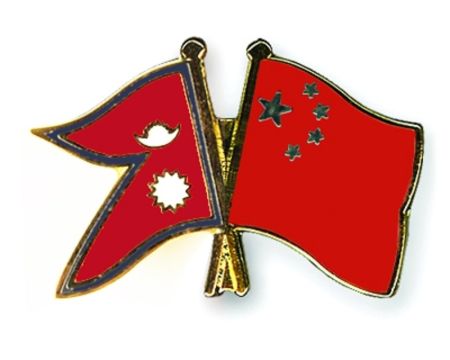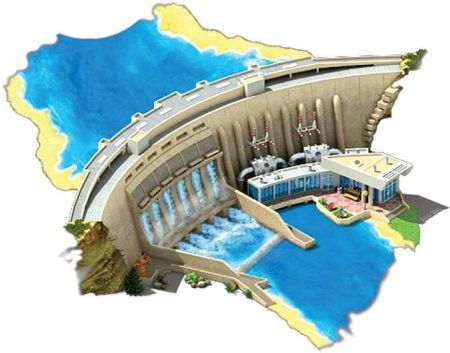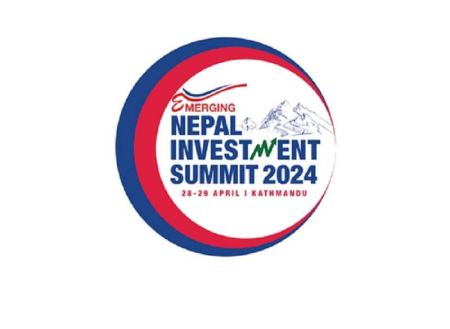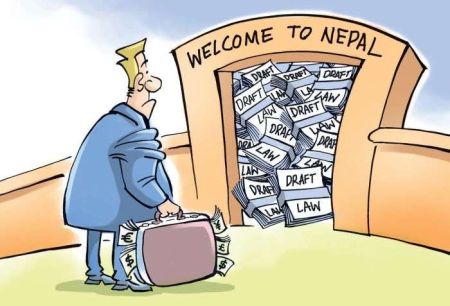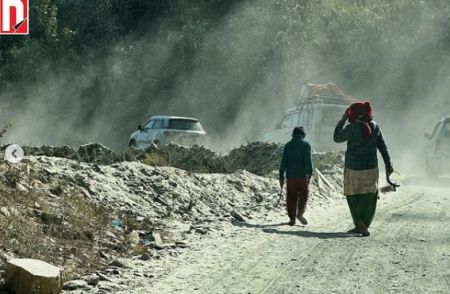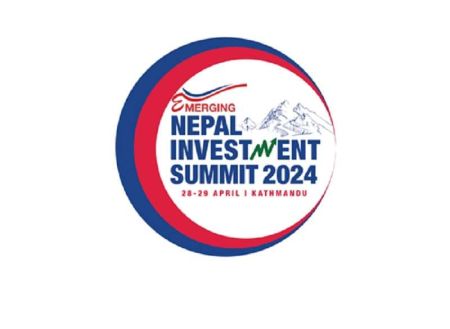Sashin Joshi is the Chief Executive Officer of Nepal Industrial & Commercial (NIC) Bank Limited.  He is also the Chairman of National Banking Training Institute (NBTI) besides being the Immediate Past President of Nepal Bankers Association. He holds an MBA in Finance, a Post-graduate Diploma in Marketing and is Credit-Accredited by international banks. Having started his banking career in 1986 with Nabil Bank, Joshi has also worked in Australia and New Zealand Banking Group, Melbourne, and ANZ Grindlays Bank, Kolkata. He was a Director of the Board and Head of Corporate & Institutional Banking at Standard Chartered Bank Nepal before moving to NIC Bank. Also a Founding Director of Rural Micro-finance Development Centre (RMDC), he aspires to contribute in scaling-up reform in Nepalâ's financial sector by working closely with the government, the central bank and the private sector. In an interview with Pinaki Roy of New Business Age, Joshi analyses the performance of Nepal's commercil banks over the past year and recommends remedial measures on issues that plague the sector. Excerpts:
He is also the Chairman of National Banking Training Institute (NBTI) besides being the Immediate Past President of Nepal Bankers Association. He holds an MBA in Finance, a Post-graduate Diploma in Marketing and is Credit-Accredited by international banks. Having started his banking career in 1986 with Nabil Bank, Joshi has also worked in Australia and New Zealand Banking Group, Melbourne, and ANZ Grindlays Bank, Kolkata. He was a Director of the Board and Head of Corporate & Institutional Banking at Standard Chartered Bank Nepal before moving to NIC Bank. Also a Founding Director of Rural Micro-finance Development Centre (RMDC), he aspires to contribute in scaling-up reform in Nepalâ's financial sector by working closely with the government, the central bank and the private sector. In an interview with Pinaki Roy of New Business Age, Joshi analyses the performance of Nepal's commercil banks over the past year and recommends remedial measures on issues that plague the sector. Excerpts:
 He is also the Chairman of National Banking Training Institute (NBTI) besides being the Immediate Past President of Nepal Bankers Association. He holds an MBA in Finance, a Post-graduate Diploma in Marketing and is Credit-Accredited by international banks. Having started his banking career in 1986 with Nabil Bank, Joshi has also worked in Australia and New Zealand Banking Group, Melbourne, and ANZ Grindlays Bank, Kolkata. He was a Director of the Board and Head of Corporate & Institutional Banking at Standard Chartered Bank Nepal before moving to NIC Bank. Also a Founding Director of Rural Micro-finance Development Centre (RMDC), he aspires to contribute in scaling-up reform in Nepalâ's financial sector by working closely with the government, the central bank and the private sector. In an interview with Pinaki Roy of New Business Age, Joshi analyses the performance of Nepal's commercil banks over the past year and recommends remedial measures on issues that plague the sector. Excerpts:
He is also the Chairman of National Banking Training Institute (NBTI) besides being the Immediate Past President of Nepal Bankers Association. He holds an MBA in Finance, a Post-graduate Diploma in Marketing and is Credit-Accredited by international banks. Having started his banking career in 1986 with Nabil Bank, Joshi has also worked in Australia and New Zealand Banking Group, Melbourne, and ANZ Grindlays Bank, Kolkata. He was a Director of the Board and Head of Corporate & Institutional Banking at Standard Chartered Bank Nepal before moving to NIC Bank. Also a Founding Director of Rural Micro-finance Development Centre (RMDC), he aspires to contribute in scaling-up reform in Nepalâ's financial sector by working closely with the government, the central bank and the private sector. In an interview with Pinaki Roy of New Business Age, Joshi analyses the performance of Nepal's commercil banks over the past year and recommends remedial measures on issues that plague the sector. Excerpts: What is your analysis of the performance of Nepal's commercial banks over the past year?
It's not very good. But honestly speaking, I was expecting it to be even worse. Banks were helped to a certain extent by some relief measures given by the central bank at the last minute. I had predicted that the aggregate profit of all the commercial banks put together would be negative. However, we have managed aggregate increase in profit by about two-and-a-half per cent compared to that of last year. My analysis is that the Nepal Rastra Bank’s (NRB) relief measures in the eleventh hour helped us avert negative growth.
Total net profit of commercial banks in Nepal has increased by a mere 2.28 per cent compared to that of last year. What is the reason for this slow growth?
The commercial banks’ profitability was impacted for a number of reasons. As a result of extremely tight liquidity, banks started competing fiercely for deposits by going one-up on interest rates. The deposit rates increased significantly but the banks were not able to pass on all the increase to the borrowers. This resulted in the banks’ average margin getting reduced. Many banks had to take on additional costs on account of personnel, utility, security, stationery supply etc among others. And of course, there is no business growth for reasons of political instability.
Liquidity crunch continues to persist. What is the severity of the crunch at this point of time and how long will it take us to overcome this?
I would like to contradict you here. The liquidity situation has improved significantly over the past couple of months. It improved primarily due to two reasons: one is that there was massive government expenditure that happened towards the end of the last fiscal year. Besides, the budget this year came out on time and therefore, there was no gap between budget approval and government expenditure. On the external account, there have been a lot of reimbursements that have happened for projects which were undergoing or completed. Another reason is that due to very tight liquidity crunch and lack of favourable market conditions, banks were putting brakes on new lending. These two reasons together helped preserve liquidity. However, the real test will be when a lot of withdrawals will take place during Dashain and Tihar. Also, if the capital expenditure of the government does not coincide with the festival season, we could have another tight situation. For that, we will have to wait and see but for now, we are
sailing easy.
sailing easy.
The total non-performing loan has increased by close to 26 per cent as against last year. What could be the possible remedial measures?
To tell you the truth, I had expected higher increase in non-performing loans. The relief given by the central bank especially to the real estate sector towards the end of last fiscal year provided respite because the borrowers were allowed to pay a month after the year end without attracting any provisioning. I believe there is still some under provisioning by banks.
If there is a problem, you have to bite the bullet. Postponing a problem is not going to make the problem go away. If you have a problem loan, you have to recognise it as one and make appropriate provisioning for that. However, if a business can be revived through re-organisation or re-scheduling, then we should also make every effort to make that happen.
How can public confidence in financial institutions be restored at a time when the banking industry has been troubled with lower deposit mobilisation?
I think the financial system in Nepal is relatively sound, more so when it comes to "A" class commercial banks which account for 80 per cent of the market both in deposits and lending. Most of these institutions are well supervised, have reasonably large capital base and on the whole, well managed. The problem lies basically with "A" class institutions where quite a few corporate governance-related issues have surfaced. There is also a lack of regular and effective supervision by the central bank. If visible measures are taken in these two areas by the central bank and boards of these institutions, I think it will help in restoring public confidence.
What is your stance on granting banking licenses to practically everybody who applies for it? Aren't we overcrowded with banks in the urban centres while 70 per cent of the country still has no access to formal banking?
That was the biggest problem. NRB effectively had just one criterion capital, so anyone who had the money could virtually open a bank here. That was a very wrong policy because banking is such a sensitive industry. Unlike other industries, banks are the custodian of public money where people put their trust. While allowing bank licenses, NRB should have a very prudent and strict criterion to ensure the right intentions of the promoters and the management.
It's not a numbers issue. It's more about the quality of the banks and the effectiveness of the central bank's supervision. Banks are spreading out and more than a 1,000 branches have been opened in the last one year by all the banks put together. And most of these branches are located outside Kathmandu.
We are being inundated with merger rhetoric for as long as one can remember, however, we haven't seen one till now. How serious are the stakeholders about this and how will it impact the industry?
For any merger to happen, the basis is the potential value addition. Merger for the sake of merger is nonsense. If you look at the international experience on mergers, more than 50 per cent have usually failed. A merger is welcome provided there is value addition taking place between merging institutions by way of bringing in synergies, business, cost, reach, network etc. In Nepal's context, the cultural angle also comes into play. Factors such as multiple promoters with their own personal interests and their respective egos taking precedence etc override the fundamental business deal. That's why I believe that it's very difficult for mergers to happen here.
However, if mergers do happen, it will definitely be good for the industry. Some degree of consolidation is required because there are too many small players in the market. Size does matter and provided there is a requisition from managements, better efficiency can be brought in.
How long will it take to improve the BoP situation for us to get slightly more comfortable than we at present are?
We have a huge trade imbalance and if we are going to depend solely on trade, it is going to take us a very long time. The export-import imbalance is quite severe which we can deal with it by building more manufacturing establishments and having a better industrial base. Even if we want to promote hydropower, the gestation period again is going to consume a lot of time. Therefore, purely based on trade prospects, it is going to take us a long time to improve the BoP situation. We have of course, been helped by the remittances brought in by Nepali Diaspora and also the aid coming through bilateral and multilateral donors that ensures capital inflow. Even if we have financial and political stability and the policies are conducive, we cannot expect wonders. To even expect that we will have a trade surplus will take us at least 10 years if we start now.
Why is it becoming more difficult to control inflation? What are your recommendations to successfully control inflation?
In Nepal, inflation is primarily on account of two factors. One is the imported inflation which we can do nothing much about. Within this imported inflation, India plays a big role as two-third of our trade is with India which is just the formal trade. If you also take into account the informal trade, my guess is that it would be as much as 80 per cent. So, a lot of inflation is imported from India. The other factor is the supply side where there are no internal control mechanisms. The distribution cost is very high because of the transportation cartels and syndicates. Cost of power is very high in Nepal while the labour costs are ever rising. We still donâte have very good access in terms of roads which again makes it a bottleneck to get goods from one place to another thus adding up costs. We can do a lot on the internal side if the government becomes more effective in its functioning. Besides, the government must allow some subsidy to the agricultural sector otherwise our farmers just cannot compete with the farmers in India where you have subsidies for fertilizers, irrigation, power etc.
What are your expectations from NRB given the prevailing scenario where the banking industry has registered an excruciatingly slow growth?
One expectation I have is that whenever NRB brings out any new policies, directives or circulars, they do it through a consultative process where stakeholders are involved and there is a dialogue. It's not necessary that NRB has to agree to everything that the stakeholders say but at least there is a two-way process when you take everybody into confidence. If a consultative process brings forth any new policies and directives, there will be ownership from the stakeholders themselves. It means that enforcement will be that much more easier because then it becomes voluntary.
My second expectation is that while bringing out any new directives or policies, they should also try to emulate some of the best practices in the world and think it through before implementing them. We have seen in the past that in quite a few instances, they have come out with half-baked directives which they had to amend a number of times. That shows some kind of shallow thinking within the central bank when they come out with directives.
Third one is that when they come out with any policies, they should not look only at the bad practices followed by one or two institutions and then paint everyone with the same brush. They must not generalise. If there are some bad apples, they should handle them individually and not treat everybody with suspicion.






